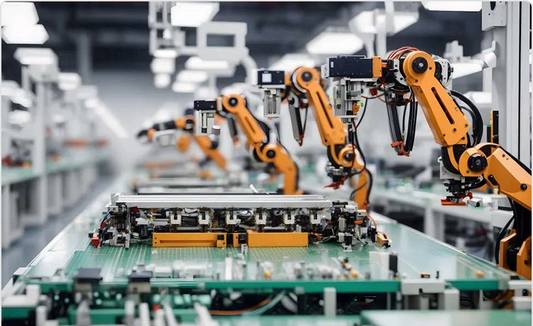Smart Materials: The Future of Construction and Manufacturing

Grindmel´s Engineering Team
We are a Honduran company founded by mechanical and electrical engineers.

What are smart materials?
Smart materials are still in development, and there are some challenges that must be addressed before they can be widely used. These challenges include:
There are many different types of smart materials. Some examples include:
•Color-changing materials: These materials can change their color in response to temperature, light, pH, or electric or magnetic fields.
•Shape-changing materials: These materials can change their shape in response to temperature, light, pH, electric or magnetic fields.
•Size-changing materials: These materials can change their size in response to temperature, light, pH, electric or magnetic fields.
•Materials that change stiffness: These materials can change their stiffness in response to temperature, light, pH, electric or magnetic fields.
•Materials that change electrical conductivity: These materials can change their electrical conductivity in response to temperature, light, pH, electric or magnetic fields.
How are smart materials used in construction and manufacturing?
Smart materials are used in a variety of applications in construction and manufacturing. In construction, smart materials can be used to create more energy-efficient, durable, and adaptable buildings. For example, smart materials can change their color to reflect or absorb sunlight, depending on the outside temperature. They can also change their shape to adapt to changing environmental conditions.
In manufacturing, smart materials can be used to create more personalized and functional products. For example, smart materials can change their color or texture in response to pressure or temperature. They can also change their shape to adapt to the user's needs.
What are the benefits of smart materials?
Smart materials have many benefits, including
•Increased energy efficiency: Smart materials can help reduce the energy consumption of buildings and products.
•Increased durability: Smart materials can help extend the lifespan of buildings and products.
•Greater adaptability: Smart materials can help buildings and products adapt to changing environmental conditions.
•Greater customization: Smart materials can help create more personalized and functional products.
What are the benefits of smart materials?
Smart materials are still in development, and there are some challenges that must be addressed before they can be widely used. These challenges include:
•Cost: Smart materials are often more expensive than traditional materials.
•Durability: Smart materials are often not as durable as traditional materials.
•Scalability: Smart materials are often difficult to produce on a large scale.
The future of smart materials
Despite the challenges, smart materials have great potential to revolutionize construction and manufacturing. As technology advances, smart materials will become more affordable, durable, and scalable. This will make them more attractive for a wide range of applications.
Conclusion
In conclusion, smart materials represent an exciting frontier in materials science, with the potential to transform industries such as construction and manufacturing. Although there are challenges related to cost, durability, and scalability, the potential benefits, such as increased energy efficiency, durability, and adaptability, are significant. As technology continues to advance, smart materials are likely to become more accessible and widely used, leading to more innovative and sustainable products and buildings.



